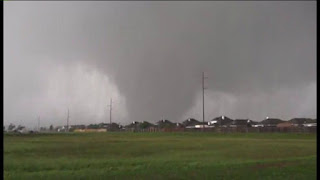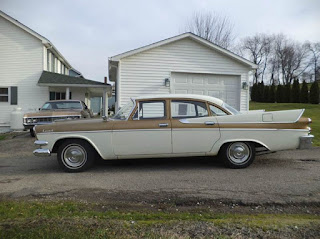Tornado 101
©2013
by LeeZard
 |
| The Moore Tornado |
We all have a respectful, fear-filled fascination with
tornadoes and with good reason. Mondays top-of-the-scale EF-5 twister, two
miles wide, hit Oklahoma City and roared through suburban Moore with top winds
in excess of 250 MPH.
Tornadoes are one of nature’s most unstoppable forces,
right up there with earthquakes, tsunamis, volcanic eruptions, blizzards and
hurricanes. The thing about tornadoes, though, is that they are the most
severe weather event possible and they occur a heckuva lot more often than
other natural disasters. According to the National Weather Service there were
939 tornadoes in the U.S. last year, killing 553 people. The Moore tornado took
24 lives and left $6-billion worth of damage in its wake.
 |
| Moore, OK |
Under the right conditions, tornadoes can happen
anywhere on the planet - and they do. Ironically, in the early 1990s I was at a
convention of the American Meteorologist Society in Anaheim, CA when a twister
touched down near our hotel. Even though it was several blocks away it sounded light
a freight train running right through my room. As a side note, this event
furthered the legend that wherever the AMS meets, strange weather happens.
No place on earth suffers through more tornadoes, however, than America’s aptly named Tornado Alley which begins in central Texas and stretches northward into Oklahoma, Kansas and Nebraska, and eastward into central Illinois and Indiana. The region’s weather and topography create the perfect breeding ground for these monster storms.

The Rocky Mountains block moist air from flowing eastward. This clears the way for frigid Arctic air to stream south from Canada over the Great Plains, where no mountains or forests can thwart a twister. These cold blasts then run into warm, humid air coming up from the Gulf of Mexico. When these cold and warm air masses collide, they cause powerful rotating updrafts and downdrafts that can create dangerous thunderstorms known as "supercells," which in turn spawn powerful tornadoes.
Despite all the technology at
their disposal, forecasters still have a tough time predicting the where and
when. Residents of Moore had a little over 30-minutes to prepare for the
onrushing disaster. The average warning time is actually less than half that. According to Popular Science:
“Hurricanes and blizzards show up on satellites days beforehand, but the conditions that favor tornados appear much more quickly and unexpectedly. Their paths are smaller and they last for shorter periods of time, so predicting any particular tornado requires a fine-grain understanding that's more difficult for scientists.”
I don’t know about you but I am very glad I did this
research. I will be driving into the belly of the beast in June to visit my
friends who live one hour north of Oklahoma City and help them with the wheat
harvest. The good news is that the residents of Tornado Alley know what to look
for under certain conditions and their awareness goes to its highest level.
The Los
Angeles Times quotes one Tornado
Alley resident:
"When spring comes, you watch the sky, and you learn the signs," he says. "First, bad storms have a certain look: Ominous, dark clouds, often with an odd greenish tint, which can indicate hail. Then, a sudden temperature drop — it can be near 100 degrees and sweltering one minute, almost cold the next. And most chilling of all, a stillness that's like nothing else I've ever experienced: From strong winds whipping the trees to a clammy calm in seconds. If you weren’t afraid before, you are then."




Comments